
Wia Wia Nature Reserve: Serenity in Suriname
Discover the untouched beauty of Wia Wia Nature Reserve in Suriname, a sanctuary for rare wildlife, pristine mangroves, and serene coastal lagoons.
Nestled along the northeastern coast of Suriname, the Wia Wia Nature Reserve offers an untouched paradise for nature lovers and wildlife enthusiasts. Spanning over 36,000 hectares, the reserve is a sanctuary for diverse flora and fauna. Visitors will find themselves immersed in lush mangrove forests, expansive mudflats, and serene coastal lagoons. This pristine environment is a haven for birdwatchers, with over 100 species of birds, including the Scarlet Ibis, making it their home. The reserve's remote location ensures a tranquil experience, far from the hustle and bustle of city life. The best way to explore Wia Wia is by guided boat tours, which provide a unique perspective of the intricate waterways and rich biodiversity. The reserve is also known for its important role in sea turtle conservation. Between February and July, visitors can witness the remarkable sight of Leatherback and Green turtles nesting along the sandy shores. In addition to its natural wonders, Wia Wia offers a glimpse into the cultural heritage of the indigenous communities who have lived harmoniously with nature for generations. Local guides often share fascinating stories and insights into traditional practices, enriching the overall experience. Whether you're seeking adventure or tranquility, Wia Wia Nature Reserve promises an unforgettable journey into one of Suriname's most precious ecological treasures.
Local tips in Wia Wia Nature Reserve
- Best time to visit is during the dry season from February to August for optimal wildlife viewing.
- Book a guided boat tour in advance to explore the reserve’s waterways and spot rare bird species.
- Pack insect repellent and sun protection, as the area can be humid and sunny.
- Respect local customs and traditions when interacting with indigenous guides.
- Carry enough water and snacks, as facilities within the reserve are limited.
Wia Wia Nature Reserve: Serenity in Suriname
Nestled along the northeastern coast of Suriname, the Wia Wia Nature Reserve offers an untouched paradise for nature lovers and wildlife enthusiasts. Spanning over 36,000 hectares, the reserve is a sanctuary for diverse flora and fauna. Visitors will find themselves immersed in lush mangrove forests, expansive mudflats, and serene coastal lagoons. This pristine environment is a haven for birdwatchers, with over 100 species of birds, including the Scarlet Ibis, making it their home. The reserve's remote location ensures a tranquil experience, far from the hustle and bustle of city life. The best way to explore Wia Wia is by guided boat tours, which provide a unique perspective of the intricate waterways and rich biodiversity. The reserve is also known for its important role in sea turtle conservation. Between February and July, visitors can witness the remarkable sight of Leatherback and Green turtles nesting along the sandy shores. In addition to its natural wonders, Wia Wia offers a glimpse into the cultural heritage of the indigenous communities who have lived harmoniously with nature for generations. Local guides often share fascinating stories and insights into traditional practices, enriching the overall experience. Whether you're seeking adventure or tranquility, Wia Wia Nature Reserve promises an unforgettable journey into one of Suriname's most precious ecological treasures.
When is the best time to go to Wia Wia Nature Reserve?
Iconic landmarks you can’t miss
Fort Zeelandia
Discover the rich history of Fort Zeelandia, a key landmark in Paramaribo, Suriname, reflecting the nation's colonial past and vibrant culture.
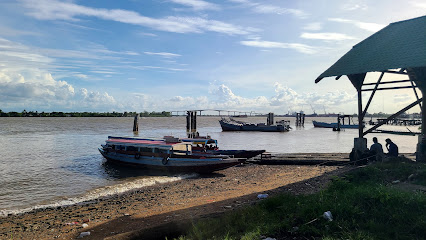
Zus & Zo
Discover the authentic flavors of Suriname at Zus & Zo, a delightful restaurant in Paramaribo offering a taste of local culinary traditions.

Brownsberg
Immerse yourself in the natural beauty of Brownsberg, a serene park in Suriname, perfect for hiking, wildlife watching, and breathtaking views.

Peperpot Nature Park
Immerse yourself in the natural beauty and tranquility of Peperpot Nature Park, a premier nature preserve in Suriname, perfect for adventure and relaxation.

Presidential Palace
Discover the grandeur of the Presidential Palace in Paramaribo, a stunning example of colonial architecture and a symbol of Suriname's rich heritage.

Bigi Pan
Explore the rich biodiversity and stunning landscapes of Bigi Pan, a serene national park in Suriname, perfect for nature lovers and eco-tourists.

Neotropical Butterfly Park
Explore the Neotropical Butterfly Park in Suriname, where nature's beauty meets the enchanting world of butterflies.

Cardy Adventures & Bike Rental
Explore Paramaribo's scenic beauty with Cardy Adventures & Bike Rental, your gateway to unique cycling experiences in Suriname.

Pikin Sranan
Discover Pikin Sranan, an organic farm in Lelydorp, Suriname, offering fresh produce and a glimpse into sustainable farming practices.

Historic Innercity of Paramaribo
Explore the Historic Innercity of Paramaribo, a UNESCO World Heritage Site with stunning colonial architecture and vibrant local culture.

Akira Overwater Resort - Bigi Pan
Discover tranquility at the Akira Overwater Resort in Paramaribo, where luxury meets nature in beautiful overwater bungalows.

Wannawiro Nature Park
Explore the lush landscapes and rich biodiversity of Wannawiro Nature Park, the perfect escape for nature lovers in Avanavero, Suriname.

Galibi Nature Reserve
Explore the serene Galibi Nature Reserve, where lush landscapes and pristine beaches create a paradise for nature enthusiasts and wildlife lovers.

WWF Guianas (Suriname & Guyana)
Discover the commitment to conservation and biodiversity at WWF Guianas, an essential stop for eco-minded travelers in Paramaribo.

De Goslar
Explore De Goslar, a historical landmark in Paramaribo, Suriname, rich in culture and architectural beauty that tells the story of the region's past.
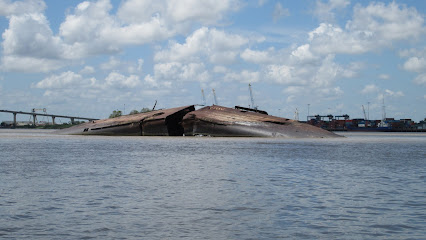
Unmissable attractions to see
Anaula Nature Resort
Discover the tranquil beauty and rich biodiversity at Anaula Nature Resort, a perfect getaway in Aurora, Suriname.

Wannawiro Nature Park
Discover the breathtaking beauty and diverse ecosystems of Wannawiro Nature Park in Suriname, a must-visit for nature lovers and adventure seekers.

Essential places to dine
Torarica Resort
Discover luxury and local charm at Torarica Resort in Paramaribo—your gateway to relaxation and adventure in Suriname.

Chi Min
Discover the rich flavors of authentic Chinese cuisine at Chi Min in Paramaribo – a culinary journey you won't forget.
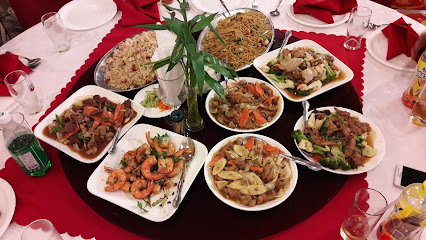
Zus & Zo
Experience the vibrant flavors of Suriname at Zus & Zo - where local cuisine meets delightful ambiance in Paramaribo.

Restaurant Sarinah
Discover authentic Indonesian flavors at Restaurant Sarinah in Paramaribo - where every dish tells a story.
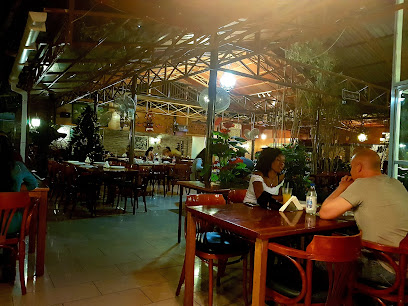
Garden of Eden
Experience authentic Thai flavors at the Garden of Eden in Paramaribo – where every dish tells a story.

SOUPOSO
Discover the authentic taste of Suriname at SOUPOSO - where every dish is a celebration of local flavors.

Mirosso
Experience authentic Javanese cuisine at Mirosso in Paramaribo—where traditional flavors meet warm hospitality.
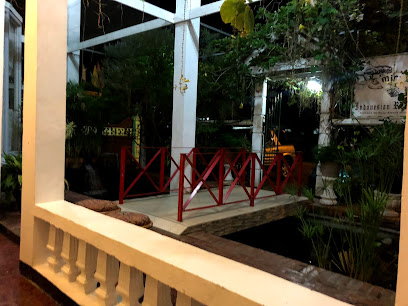
De Gadri
Experience authentic Surinamese cuisine at De Gadri in Paramaribo - where every dish tells a story.

Shaqien
Discover the vibrant flavors of Surinamese cuisine at Shaqien in Meerzorg – where every dish tells a story.

Padre Nostro
Experience authentic Italian flavors at Padre Nostro in Paramaribo, where delicious cuisine meets delightful ice cream treats.

Baka Foto
Discover authentic Surinamese cuisine at Baka Foto, nestled within Fort Zeelandia's historic charm in Paramaribo.

Bamboo Green Garden
Experience authentic Chinese cuisine at Bamboo Green Garden in Paramaribo - where tradition meets taste in a serene setting.

Warung Manis
Discover the vibrant flavors of Indonesian cuisine at Warung Manis in Paramaribo – a culinary journey awaits!

KFC Waterkant
Discover KFC Waterkant in Paramaribo - where crispy fried chicken meets stunning waterfront views, perfect for every traveler’s appetite.

Fun Tu
Experience authentic Chinese cuisine at Fun Tu in Paramaribo - where every dish tells a story of tradition and flavor.
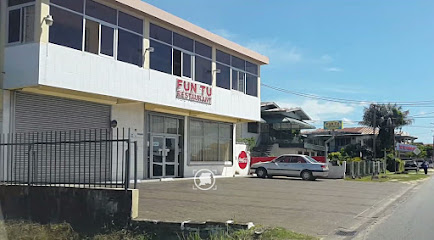
Markets, malls and hidden boutiques
Hermitage Mall
Discover the best of shopping, dining, and entertainment at Hermitage Mall in Paramaribo, Suriname - a vibrant hub for culture and commerce.

Fort Zeelandia
Explore Fort Zeelandia, a historical fort in Paramaribo, Suriname, showcasing the rich colonial heritage and cultural diversity of this South American gem.

Paramaribo Central Market
Explore the vibrant Paramaribo Central Market, where local culture, fresh produce, and handmade crafts come together in a sensory delight.

Maretraite Mall
Discover the heart of shopping in Paramaribo at Maretraite Mall, where style meets culture and flavor in the vibrant Surinamese capital.

Brownsberg
Explore the breathtaking beauty of Brownsberg, Suriname's serene park that immerses you in lush rainforest and rich biodiversity.

Peperpot Nature Park
Explore the serene beauty of Peperpot Nature Park, a tranquil nature preserve in Suriname with diverse wildlife and lush landscapes.

Bigi Pan
Explore the breathtaking landscapes and rich biodiversity of Bigi Pan National Park, a true gem of Suriname's natural heritage.

Neotropical Butterfly Park
Explore the vibrant Neotropical Butterfly Park – a serene garden showcasing stunning butterflies and lush tropical flora in Suriname.

Greenheart Boutique Hotel
Discover the charm and elegance of Greenheart Boutique Hotel in Paramaribo, Suriname, your perfect retreat for relaxation and exploration.

Sweetheart
Explore Sweetheart in Paramaribo for unique local crafts, delicious treats, and a taste of Suriname's vibrant culture.

All Star
Explore the best selection of stylish and comfortable footwear at All Star in Paramaribo - your ultimate shoe destination!

Janelle's Shoes 'N Bags
Discover fashionable footwear and stylish bags at Janelle's Shoes 'N Bags, a unique shopping destination in Paramaribo, Suriname.

Unlock Nature
Discover breathtaking eco-adventures and rich biodiversity with Unlock Nature's personalized tours in the heart of nature's beauty.

Galibi Nature Reserve
Explore the untouched beauty of Galibi Nature Reserve, a serene haven for wildlife enthusiasts and beach lovers in Suriname.

ALDO Shoes Hermitage Mall
Explore the latest in footwear fashion at ALDO Shoes Hermitage Mall, your stylish destination in Paramaribo, Suriname.

Essential bars & hidden hideouts
'T vat
'T Vat Café in Paramaribo offers a cozy atmosphere and delicious local flavors, perfect for tourists looking to unwind and enjoy a taste of Suriname.

Zus & Zo
Discover the flavors of Suriname at Zus & Zo, Paramaribo's vibrant restaurant offering a unique blend of local and contemporary cuisine in a welcoming atmosphere.

Garden of Eden
Experience the authentic taste of Thailand in Paramaribo at the Garden of Eden, where vibrant flavors and warm hospitality await every visitor.

SOUPOSO
Experience authentic Surinamese flavors at SOUPOSO, a must-visit restaurant in Paramaribo, perfect for food lovers and culture seekers.

De Gadri
Discover the authentic taste of Suriname at De Gadri, a culinary haven in Paramaribo offering a vibrant selection of traditional dishes.

Bar Zuid
Experience the vibrant nightlife of Paramaribo at Bar Zuid, a hotspot for locals and tourists with great drinks and live music.

Sushi-Ya
Discover the best sushi in Paramaribo at Sushi-Ya, where fresh ingredients meet innovative Japanese cuisine in a beautiful setting.

Warung Resa
Discover the vibrant flavors of Indonesian cuisine at Warung Resa in Paramaribo, a must-visit for culinary enthusiasts and adventurers alike.

Padre Nostro
Discover the authentic taste of Italy at Padre Nostro in Paramaribo, where traditional dishes and homemade ice cream create a memorable dining experience.

Bamboo Green Garden
Discover the rich flavors of authentic Chinese cuisine at Bamboo Green Garden in Paramaribo, Suriname, a culinary gem for food lovers.

Hard Rock Cafe Suriname
Discover the lively blend of culture and cuisine at Hard Rock Cafe Suriname, where every meal is a rock 'n' roll experience.

Mezze Restaurant
Experience the vibrant flavors of Suriname at Mezze Restaurant, where local ingredients meet global cuisine in a cozy atmosphere.
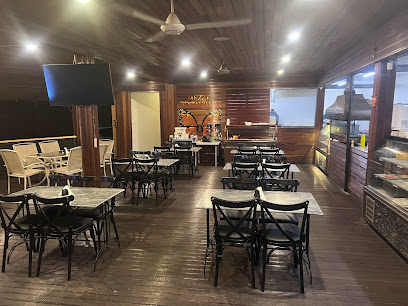
D'Bar
D'Bar: Immerse yourself in the vibrant nightlife of Paramaribo with great drinks, music, and a welcoming atmosphere.

Restaurant L'Hermitage Suriname
Experience the rich flavors of Suriname at Restaurant L'Hermitage, where local ingredients meet international culinary excellence.

Eetcafe Paramaribo
Discover the authentic flavors of Suriname at Eetcafe Paramaribo, where local cuisine meets warm hospitality.

Local Phrases about Wia Wia Nature Reserve
-
- HelloAla o
[ah-lah oh] - GoodbyeBai bai
[bye bye] - YesYa
[yah] - NoNanga
[nahn-gah] - Please/You're welcomeMi lobbi yu
[mee loh-bee yoo] - Thank youTanksi
[tahnk-see] - Excuse me/SorrySori
[soh-ree] - How are you?Ou du?
[oh doo] - Fine. And you?Boni. En ou?
[boh-nee. ain oh] - Do you speak English?Yu taki Inglish?
[yoo tah-kee ing-gleesh] - I don't understandMi no sabi
[mee noh sah-bee]
- HelloAla o
-
- I'd like to see the menu, pleaseMi wani si a meniu, mi begi
[mee wah-nee see ah meh-nee-oo, mee bay-gee] - I don't eat meatMi no eetu karni
[mee noh ee-too kahr-nee] - Cheers!Proost!
[prohst] - I would like to pay, pleaseMi wani pai, mi begi
[mee wah-nee pie, mee bay-gee]
- I'd like to see the menu, pleaseMi wani si a meniu, mi begi
-
- Help!Fu yepi!
[foo yeh-pee] - Go away!Go na baka!
[goh nah bah-kah] - Call the Police!Bri Polisi!
[bree poh-lee-see] - Call a doctor!Bri wan doktor!
[bree wahn dohk-tohr] - I'm lostMi dede
[mee dey-dey] - I'm illMi siki
[mee see-kee]
- Help!Fu yepi!
-
- I'd like to buy...Mi wani bai...
[mee wah-nee bah-ee] - I'm just lookingMi dey si
[mee dey see] - How much is it?Fa a pris?
[fah ah prees] - That's too expensiveDati de go moro duur
[daht-ee deh goh moh-roh doo-oor] - Can you lower the price?Yu kan meki a pris ondro
[yoo kahn meh-kee ah prees ohn-droh]
- I'd like to buy...Mi wani bai...
-
- What time is it?Fa teni disi?
[fah teh-nee dee-see] - It's one o'clockNa wan teni
[nah wahn teh-nee] - Half past (10)Teni pasi
[teh-nee pah-see] - MorningMoro
[moh-roh] - AfternoonNeti
[neh-tee] - EveningEfu
[eh-foo] - YesterdayGisteri
[gis-teh-ree] - TodayDen dei
[dehn dey] - TomorrowMara
[mah-rah] - 1Wan
[wahn] - 2Tu
[too] - 3Trei
[tray] - 4Fosi
[foh-see] - 5Fifti
[fif-tee] - 6Sesi
[seh-see] - 7Sebi
[seh-bee] - 8Eiti
[ay-tee] - 9Nain
[nah-een] - 10Ten
[tehn]
- What time is it?Fa teni disi?
-
- Where's a/the...?Fa a...?
[fah ah] - What's the address?Fa a adres?
[fah ah ah-drehs] - Can you show me (on the map)?Yu kan sori mi (na a mepi)?
[yoo kahn soh-ree mee (nah ah meh-pee)] - When's the next (bus)?Fa teni a neti (bus)?
[fah teh-nee ah neh-tee (buhs)] - A ticket (to ....)Wan tiketi (go ...)
[wahn tee-keh-tee (goh ...)]
- Where's a/the...?Fa a...?
History of Wia Wia Nature Reserve
-
The Wia Wia Nature Reserve, like much of Suriname, was originally inhabited by Indigenous peoples, notably the Arawak and Carib tribes. These groups were the first to navigate and utilize the lush landscapes of what is now the reserve, leaving behind artifacts and cultural imprints that hint at their sophisticated understanding of the region's ecology.
-
During the 16th and 17th centuries, European explorers, including the Dutch, began to chart the coastal regions of Suriname. The fertile lands around Wia Wia were of particular interest, leading to early colonial settlements. These explorations brought significant changes to the region's landscape and indigenous ways of life.
-
Wia Wia was officially designated as a nature reserve in 1961, recognizing the area's rich biodiversity and the need to protect its unique ecosystems. This decision was driven by conservationists and government officials who were keen on preserving the nesting sites of various bird species, especially the scarlet ibis and other migratory birds.
-
The establishment of the reserve marked the beginning of concerted conservation efforts. The Wia Wia Nature Reserve is home to a myriad of flora and fauna, some of which are endemic or endangered. Conservation programs have aimed to balance ecological preservation with sustainable tourism, ensuring that the natural beauty and biodiversity are maintained for future generations.
-
In recent decades, Wia Wia has become a focal point for ecotourism in Suriname. Efforts to develop the area as a tourist destination have included the creation of guided tours, bird-watching excursions, and educational programs that highlight both the natural and cultural history of the reserve. These initiatives have helped to foster a deeper appreciation for the region's heritage and environmental significance.
Wia Wia Nature Reserve Essentials
-
Wia Wia Nature Reserve is located along Suriname's northern coast, near the Atlantic Ocean. The nearest major city is Paramaribo, which is about 100 kilometers away. To get to Wia Wia Nature Reserve, fly into Johan Adolf Pengel International Airport (PBM) in Paramaribo. From Paramaribo, you can take a pre-arranged tour, hire a private car, or use local transportation options like buses and taxis to reach the nature reserve. The journey typically takes about 2 to 3 hours by road.
-
Once in the Wia Wia Nature Reserve area, the best way to navigate is by hiring a local guide or joining a guided tour. The reserve itself is vast and not all areas are accessible by road. Some parts may require travel by boat, especially during the rainy season when water levels rise. In Paramaribo, you can use taxis, buses, or rental cars to travel to the reserve. Note that public transportation can be infrequent, so planning ahead is essential.
-
The official currency in Suriname is the Surinamese Dollar (SRD). Credit cards are accepted in larger establishments in Paramaribo, but cash is essential for transactions in and around Wia Wia Nature Reserve. ATMs are available in Paramaribo, but it is advisable to withdraw sufficient cash before heading to the reserve, as banking facilities are limited in remote areas.
-
Wia Wia Nature Reserve is generally a safe destination for tourists. However, it is important to take standard precautions. Avoid traveling alone to remote areas and always inform someone of your travel plans. Petty crime, such as pickpocketing, can occur in crowded areas in Paramaribo, so keep an eye on your belongings. It is also advisable to use reputable tour operators and guides when exploring the nature reserve.
-
In case of an emergency, dial 115 for police assistance or 110 for medical emergencies. It is highly recommended to have travel insurance that covers medical emergencies. Emergency services in remote areas like Wia Wia Nature Reserve can be limited, so having a plan in place is crucial. For minor health issues, it is best to carry a basic first aid kit and any necessary medications.
-
Fashion: Do wear lightweight, breathable clothing suitable for tropical climates. Long sleeves and pants are recommended to protect against mosquitoes. Avoid flashy or revealing clothing. Religion: Do respect local customs and traditions. Public Transport: Do be patient, as public transportation can be slow and infrequent. Greetings: Do greet people with a friendly hello or 'Goedemorgen' in Dutch. Eating & Drinking: Do try local foods and beverages. Don't refuse food offerings, as it may be considered impolite.
-
To experience Wia Wia Nature Reserve like a local, consider visiting during the bird migration season to witness the incredible variety of bird species. Engage with local guides who can provide in-depth knowledge about the flora and fauna. Participating in eco-friendly activities and respecting the natural environment will enhance your visit. Don't miss the chance to explore the mangroves and coastal areas, which offer unique landscapes and wildlife experiences.
Trending Landmarks in Wia Wia Nature Reserve
-
Fort Zeelandia
-
Zus & Zo
-
Brownsberg
-
Peperpot Nature Park
-
Presidential Palace
-
Bigi Pan
-
Neotropical Butterfly Park
-
Cardy Adventures & Bike Rental
-
Pikin Sranan
-
Historic Innercity of Paramaribo
-
Akira Overwater Resort - Bigi Pan
-
Wannawiro Nature Park
-
Galibi Nature Reserve
-
WWF Guianas (Suriname & Guyana)
-
De Goslar
Nearby Cities to Wia Wia Nature Reserve
-
Things To Do in Moengo
-
Things To Do in Mariënburg
-
Things To Do in Paramaribo
-
Things To Do in Lelydorp
-
Things To Do in Brokopondo
-
Things To Do in Skeldon
-
Things To Do in New Amsterdam
-
Things To Do in Kwakwani
-
Things To Do in Ituni
-
Things To Do in Linden
-
Things To Do in Bartica
-
Things To Do in Anna Regina
-
Things To Do in Lethem
-
Things To Do in Kamarang
-
Things To Do in Sangre Grande








